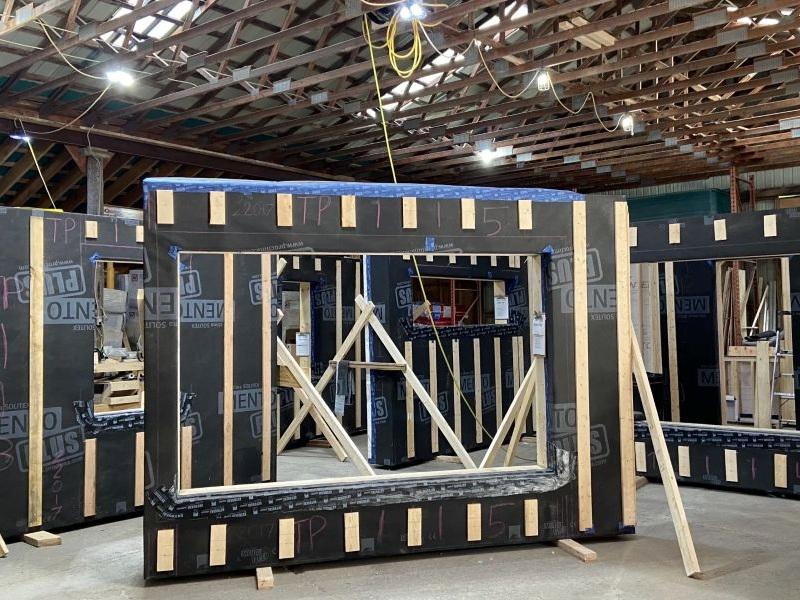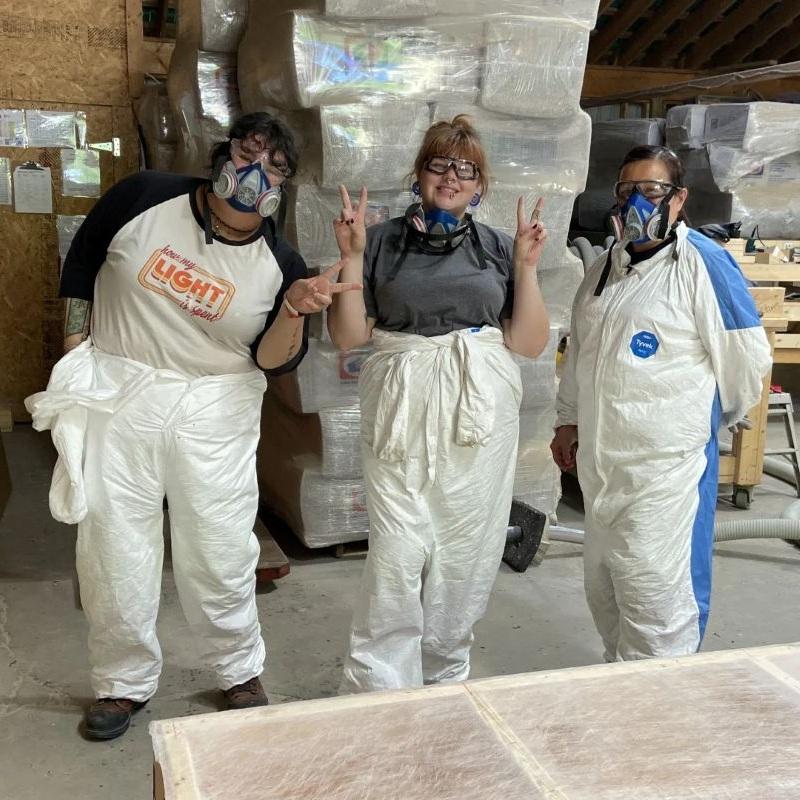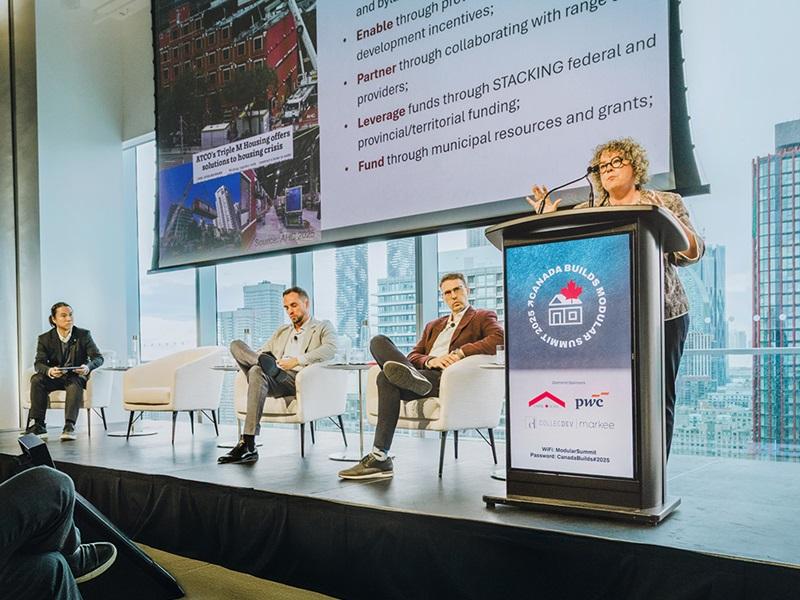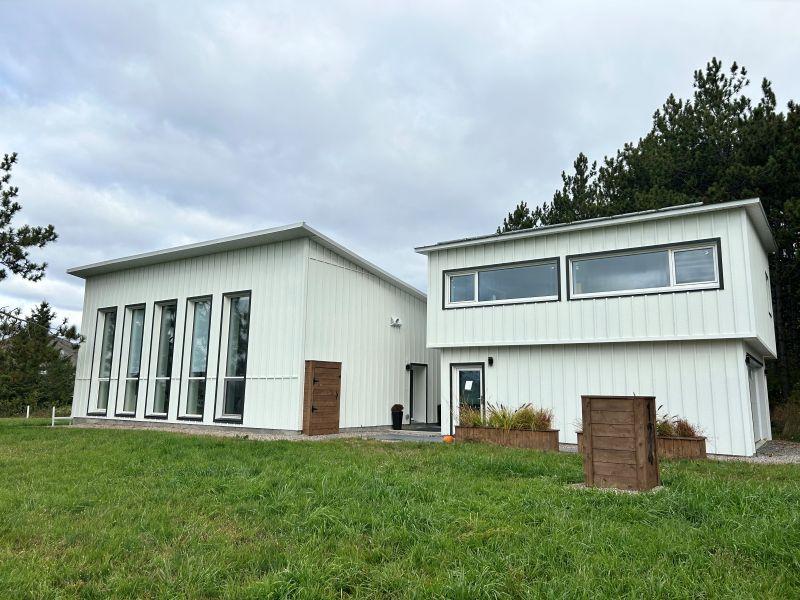
A factory in Northern Ontario being developed to churn out prefabricated housing components will not only to address the need for attainable shelter, but empower Indigenous women and communities.
Keepers of the Circle, an Indigenous hub operated by the non-profit Temiskaming Native Women's Support Group, is behind the women-led plan for a 24,000-square-foot factory in Kirkland Lake. It is to be known as Anishnawbe G'Zhiitoonegamic, or “Peoples Place of Building” in Ojibwe.
The wall, roof and floor panels for a variety of housing models will be produced. Sustainable, affordable housing can be rapidly assembled in the remote, densely forested areas of Ontario’s north with the panels, said Bertha Cormier, the executive director of Keepers of the Circle.
“We always think of the seven generations to come, and these homes will definitely be around for those seven generations plus,” she said in reference to the seventh generation principle which states that actions should be taken with future generations in mind.
Scheduled to be operational by July 2026, Cormier hopes the facility will be the first step in a value chain that will encompass constructing prefabricated parts, land development, on-site construction and finishings.
A woman-led initiative
The Temiskaming Native Women's Support Group was created in 1997 after identifying there was a disproportionate focus on employment opportunities for local Indigenous men in mining, but few for women.
Keepers of the Circle launched a pilot program funded by the Canada Mortgage and Housing Corporation (CMHC) in 2022 to help close this gap. A team of six women with no experience in construction were sent to be trained by Tooketree Passive Homes, a Baysville, Ont.-based prefab homebuilder.
The women became familiar with Tooketree’s panelized construction system. Over three months, the team built the wall, roof and floor panels for a 480-square-foot loft-style home under a Passive House standard. The parts were taken back to Kirkland Lake in January 2023, where the home was fitted over three days.
The experience was so successful Keepers of the Circle decided to continue, except with a much larger ambition: building the panel factory in Kirkland Lake.
Anishnawbe G'Zhiitoonegamic
A $20-million project supported by $10-million in funding from the CMHC, Anishnawbe G'Zhiitoonegamic is planned to have a high level of automation to support productivity and safety. One example Cormier gave is butterfly tables that flip the panels, reducing the risk of injury.
Fifteen equipment operators are expected to work per shift to produce panels. Those parts will go to construct housing such as an accessible two-bedroom home, a four-bedroom design for multi-generational living, and a fourplex, Cormier said. The factory will also be open to custom builds such as a four-bedroom, 3,500-square-foot home.
At full production, the factory is expected to push out enough panels to build over 100 homes per year, sized at an average of approximately 1,200 square feet.
The price per square foot has yet to be finalized, but affordability will be prioritized.
Employees will have access to a cultural room for a morning smudge and a 24-7 daycare at the on-site administration building.
Keepers of the Circle is in the process of setting up the factory as a for-profit entity with its own board of directors.
Climate friendly, healthy homes

While the housing problems of Canada’s biggest cities take up most of the nation’s attention, Cormier said Northern Ontario is also struggling. She identified a shortage of affordable housing, with developers prioritizing large, luxury builds in the region.
Another issue is that “a lot of communities north of us, their only access is by winter road.” Last year, only 28 days of safe ice were available, Cormier said.
With a short window of access to construction labour and supplies, housing is challenging to build. But a panelized construction model means the parts can be shipped and stored when the communities are accessible, then installed over the summer.
Building quality, climate-friendly homes is another priority.
Many homes in North Ontario are overcrowded and mouldy with no proper ventilation, Cormier said. The panels made in the factory will prioritize health and breathability.
Passive House design will be adopted to enhance energy efficiency, helping to cut electricity bills. The materials for the panels will be low-carbon, using cellulose insulation as opposed to spray foam.
'Take a project from A to Z'
Keepers of the Circle is already negotiating with local communities for sales that will be open not just to Indigenous communities, but all Canadians, Cormier said. Similarly, the organization does not intend to limit itself to Northern Ontario. Partnerships are being struck with organizations in the Northwest Territories and Labrador.
The homes will be assembled on-site by an unrelated company, but Cormier’s ultimate vision is for Keepers of the Circle to incubate businesses “that will take a project from A to Z.” Her dream is to see the work of clearing land, designing homes, installing the panels, trades work and landscaping done by groups fostered by her organization.
Keepers of the Circle is already discussing the potential to take the model into Canada's Atlantic provinces.










